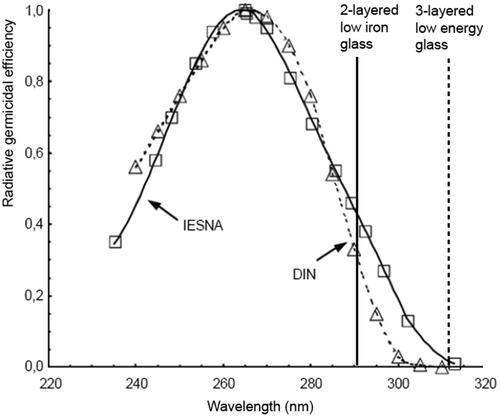Figures & data
Figure 1. Site plan and orientation of the two identical residential buildings. Building A, Kløvervej 66–92 with low transmittance glass (top) and building B, Kløvervej 116–142 with high transmittance glass (bottom). Inhabited, representative apartments (dark and light grey) for each floor were chosen for onsite daylight measurements between buildings at autumn equinox, before and after implementation of glass types, respectively.
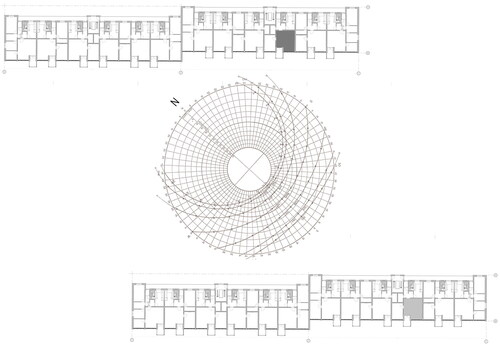
Figure 2. Elevation of SW-facing façade before (top) and after renovation (bottom), glass area marked with black.

Table 1. Specifications on types of window glass implemented.
Figure 3. Photograph of the two implemented glass types: high transmittance glass/2-layered low-iron glass (left) and low transmittance glass/3-layered low energy glass (right).
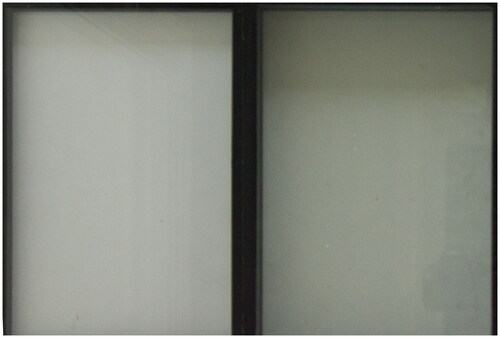
Figure 4. On site measurements of horizontal illuminance measured at height 0.8 m. Before renovation (top) and after renovation (bottom), respectively. Data for representative apartments is shown for building A (low transmittance glass) (blue) and building B (high transmittance glass) (red). Measurements were carried out simultaneously at distances of 0, 1, 2 and 3 m from the windows the graphs show illuminance average (points), standard deviation (error bars) and fitted exponential decrease (lines).
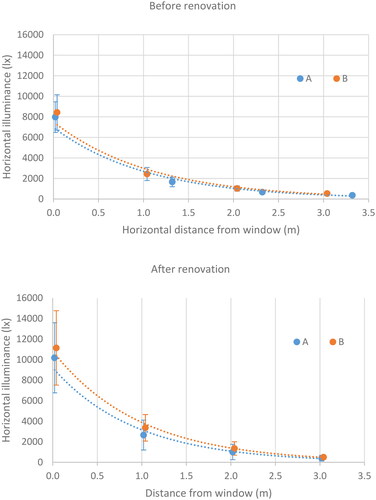
Figure 5. Spectral transmittance of the glass used in the study, measured under laboratory conditions. Existing glass type (yellow), high transmittance glass/2-layered low-iron glass (blue) and low transmittance glass/3-layered low energy glass type (green)(left). Daylight spectrum CIE D65 (right).

Figure 6. Transmitted irradiance calculated using the CIE standard illuminant D65 as the source for each glass type and weighted by the five retinal photoreceptor responsivities. “no glass” represents the D65 with no filtering/without glass. NB. Peak sensitivity for each individual retinal photoreceptor, cyanopic S cone 419.0 nm. Melanopic melanopsin 480.0 nm. Rhodopic rod 496.3 nm. Chloropic M cone 530.8 nm. Erythropic L cone 558.4 nm.
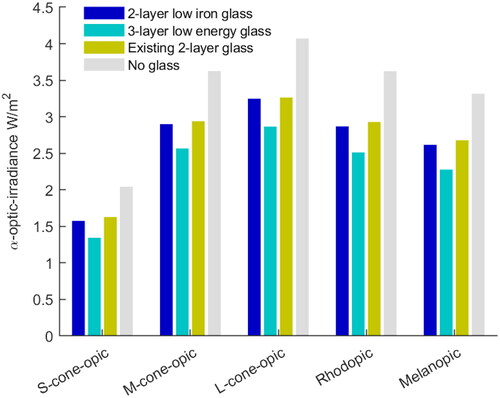
Figure 7. Transmittance of UV-B light spectrum (%) through the different glass type samples in the study. Existing glass/2-layered glass type (yellow), high transmittance glass/2-layered low-iron glass (blue) and low transmittance glass/3-layered low energy glass (green). Upper threshold for UV-B light is marked with a dotted line.
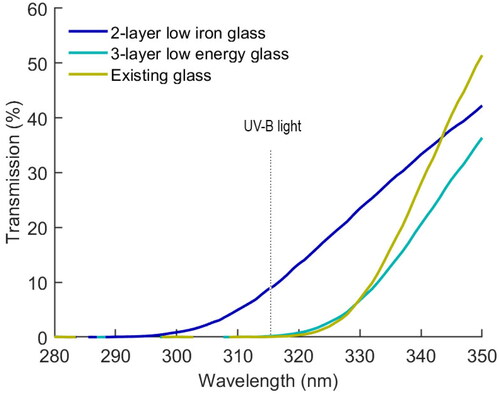
Figure 8. Energy consumption for heating corrected for heating degree days, before renovation, 2015–17 and after renovation 2017–2018. Building A with low transmittance glass (blue) and building B with high transmittance glass (red).
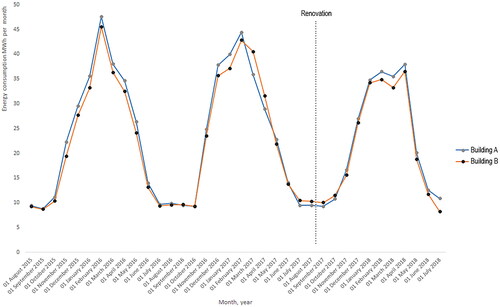
Figure 9. The standard germicidal effect and range of UV-B light (adapted from CIE155-2003). Source: DIN 5031-10:1979-11. Strahlungsphysik im optischen bereich und lichttechnik. Deutsches institut für normung e.V. Berlin, 1979 and IESNA, 2000b. IESNA lighting handbook, 9th edition. ed. Rea M.S. Illuminating engineering society of North America, New York, 2000. This standard germicidal range of the UV-B spectrum is not transmitted through low transmittance glass/3-layered low energy glass types (dotted vertical line = lower transmittance threshold), while up to 0.4 of the relative germicidal efficiency is transmitted through high transmittance glass/2-layered low-iron glass type (full vertical line = lower transmittance limit).
